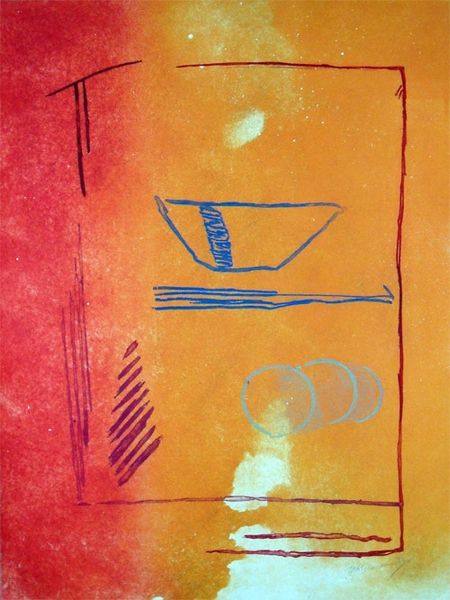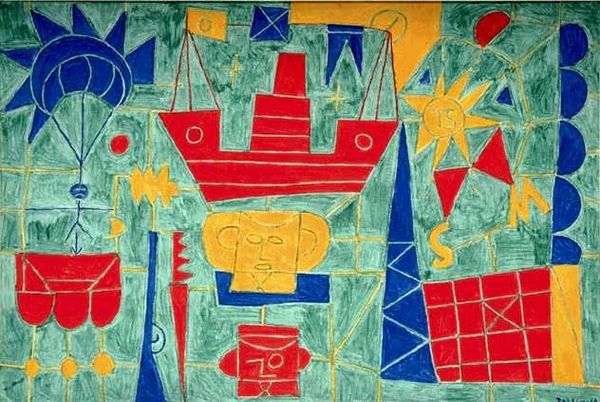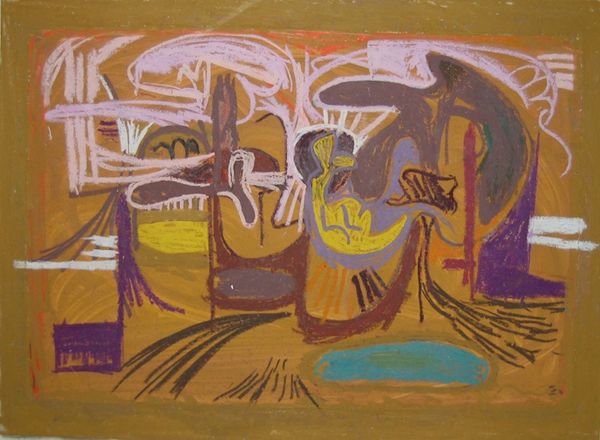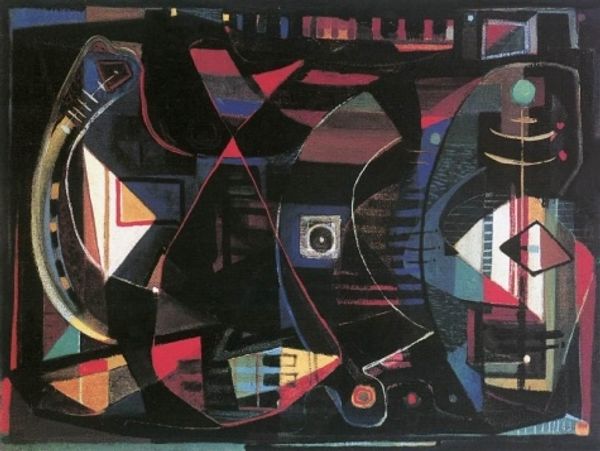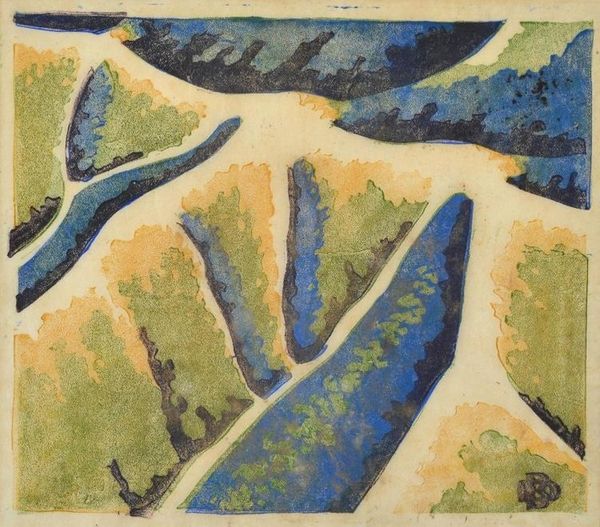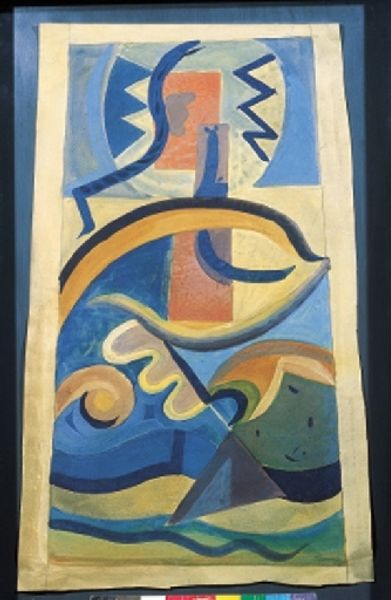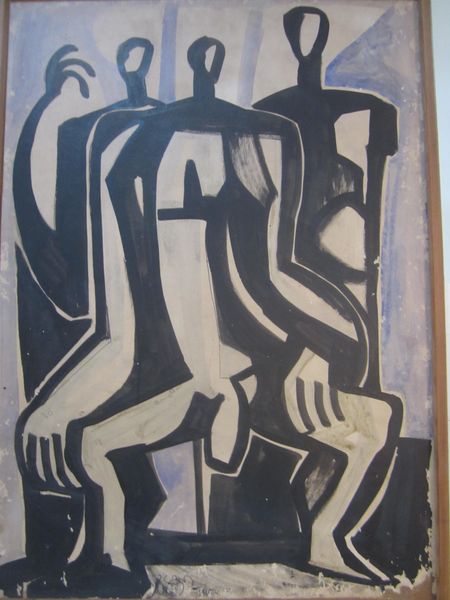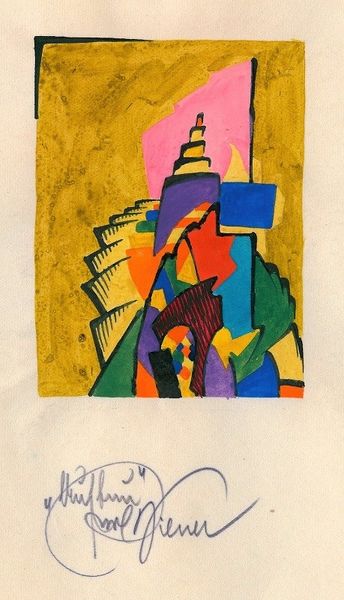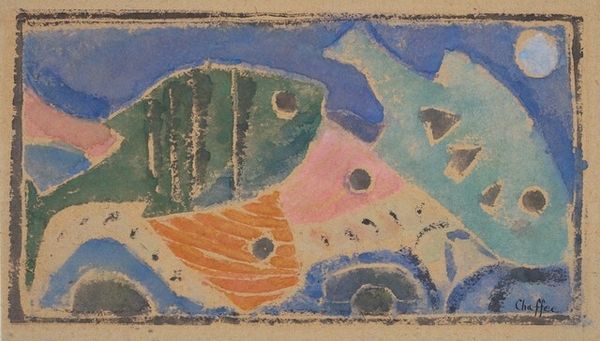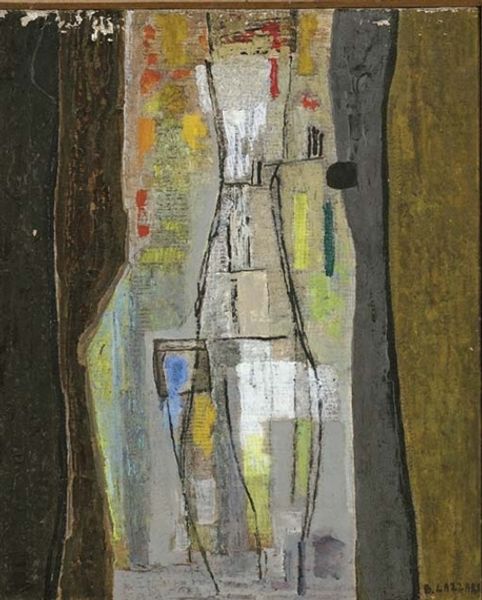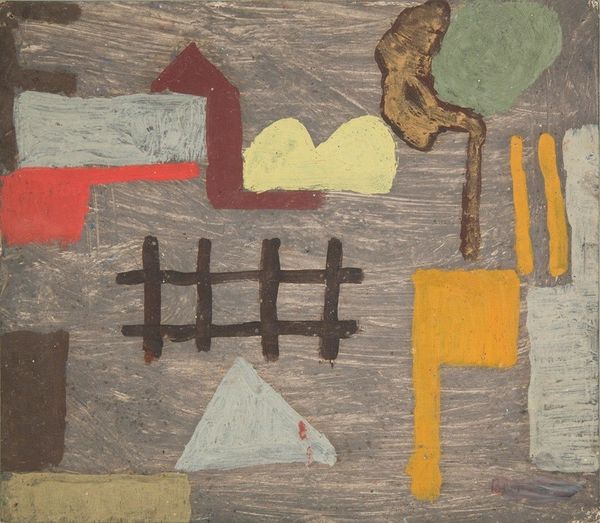
painting, watercolor, mural
#
water colours
#
painting
#
mural art
#
watercolor
#
geometric
#
abstraction
#
mural
#
modernism
#
watercolor
Copyright: Vasile Dobrian,Fair Use
Curator: The work before us is Vasile Dobrian's "Dresda Ladder," created in 1965, a striking piece executed with watercolors and reflecting elements of mural art. Editor: My immediate impression is of something both serene and slightly unsettling. The colors are calming, mostly blues and greens, but the geometric shapes are a bit disjointed, creating a feeling of displacement, a puzzle unresolved. Curator: Dobrian's engagement with abstraction during this period aligns with the broader movement toward modernism in Eastern European art. However, he infused it with a unique sensitivity, which perhaps speaks to a critical stance within those historical circumstances. Editor: Absolutely. I find myself drawn to that tension. The "ladder" seems to lead nowhere definitive; it’s an access point blocked. This visual impasse, within the sociopolitical context of the time, could suggest a commentary on aspirations met with barriers, access denied by circumstances. Curator: And notice how the flatness of the watercolor medium, combined with geometric design, reinforces a deliberate denial of depth or perspective, which seems to contradict what a ladder suggests. Editor: Precisely! It underscores the notion that access isn't straightforward. This creates a really thought-provoking dialogue about modernist ideals, societal limitations, and perhaps even veiled dissidence. It also makes me consider if Dobrian faced any state mandated guidelines during the execution of his artworks? Curator: It is reasonable to question whether the artistic freedoms that existed during his time helped shape how he conceptualized such a theme. This may open doors to understanding Dobrian's role as a modernist artist amidst potential cultural limitations in mid-1960s Romania. Editor: That intersection between personal vision and structural barriers feels key to interpreting this artwork. Dobrian challenges the role that ladders have symbolically come to represent: attainment, mobility, prosperity and advancement. What if ladders never offered that chance to all? Curator: Examining how "Dresda Ladder" engages with themes of accessibility can offer us insight into art's powerful role in cultural discourse, and in visualizing abstract concepts. Editor: I find myself questioning if the historical narrative would give meaning to this mural today and the possibility for discussions that engage political art today.
Comments
No comments
Be the first to comment and join the conversation on the ultimate creative platform.
